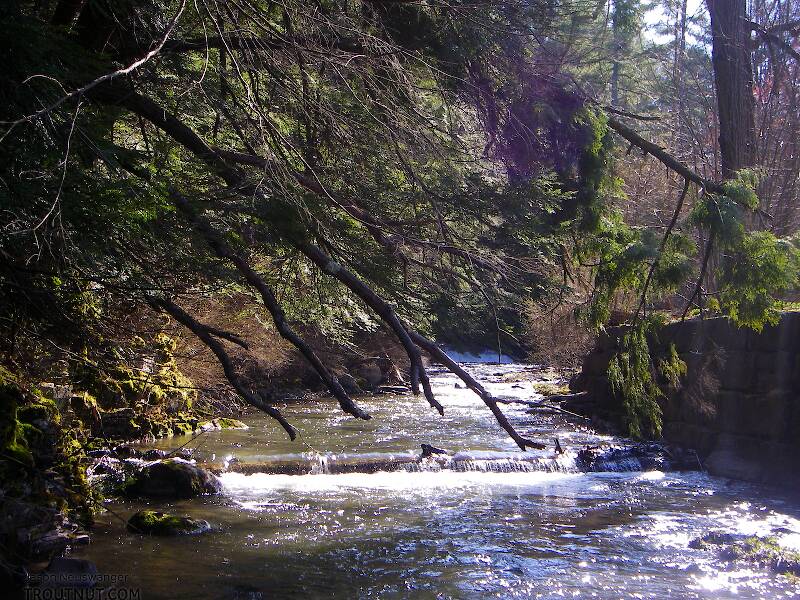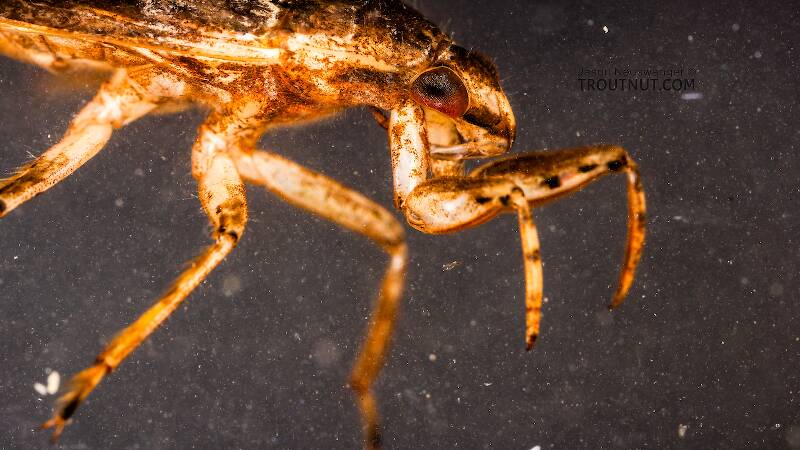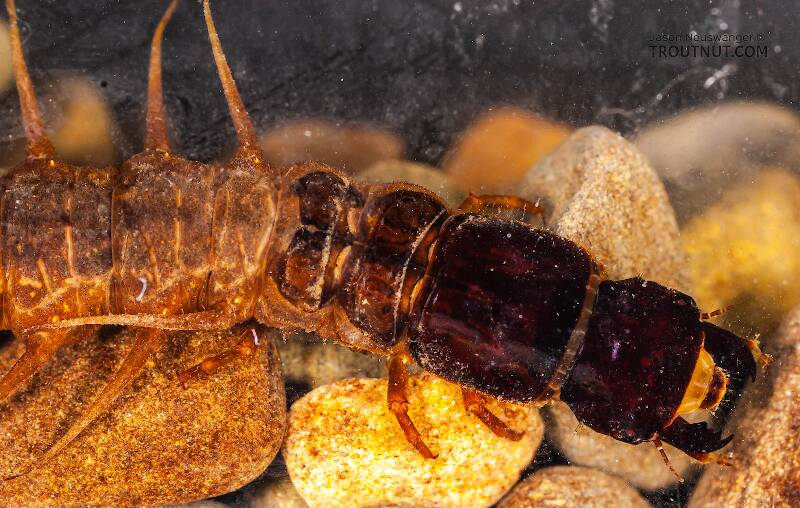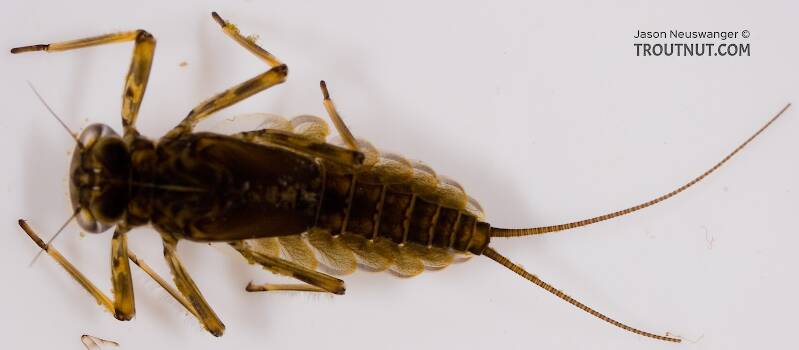
Hex Mayflies
Hexagenia limbata
The famous nocturnal Hex hatch of the Midwest (and a few other lucky locations) stirs to the surface mythically large brown trout that only touch streamers for the rest of the year.
Featured on the forum

Troutnut is a project started in 2003 by salmonid ecologist Jason "Troutnut" Neuswanger to help anglers and
fly tyers unabashedly embrace the entomological side of the sport. Learn more about Troutnut or
support the project for an enhanced experience here.
Updates from April 23, 2007
Updates from April 23, 2007
Photos by Troutnut from Mystery Creek #62 in New York

Closeup insects by Troutnut from the West Branch of Owego Creek and Factory Brook in New York

I'm glad I finally got one of these Belostoma water bugs under my good camera. I had been hoping to get one in my kick-net samples for a while with no luck, but I ended up finding this one drifting midstream just below the surface while I fished. I have frequently seen water scorpions do that, too, and I'm beginning to suspect that is a common situation travel for these large Hemiptera bugs, and perhaps the way trout are used to seeing them.

I unfortunately lost some of the originals of this specimen, so I was only able to re-process about half the pictures in the 2023 update.
Quick Reply
Related Discussions
Topic
Replies
Last Reply
3
Mar 30, 2012
by Entoman
by Entoman
3
Feb 12, 2009
by Creno
by Creno
0
May 4, 2007
by Bigguy250
by Bigguy250
Re: Lots of new pictures to check out, coming online tonight/tomorrow
In General Discussion by Troutnut
In General Discussion by Troutnut
1
Oct 4, 2006
by Dinerobyn
by Dinerobyn
6
Jan 4, 2010
by Konchu
by Konchu
Re: hook size (and chocolate duns, and old-timey mayfly family classifications)
In Eurylophella Mayfly Nymph by Warren
In Eurylophella Mayfly Nymph by Warren
10
Apr 13, 2007
by Quillgordon
by Quillgordon



